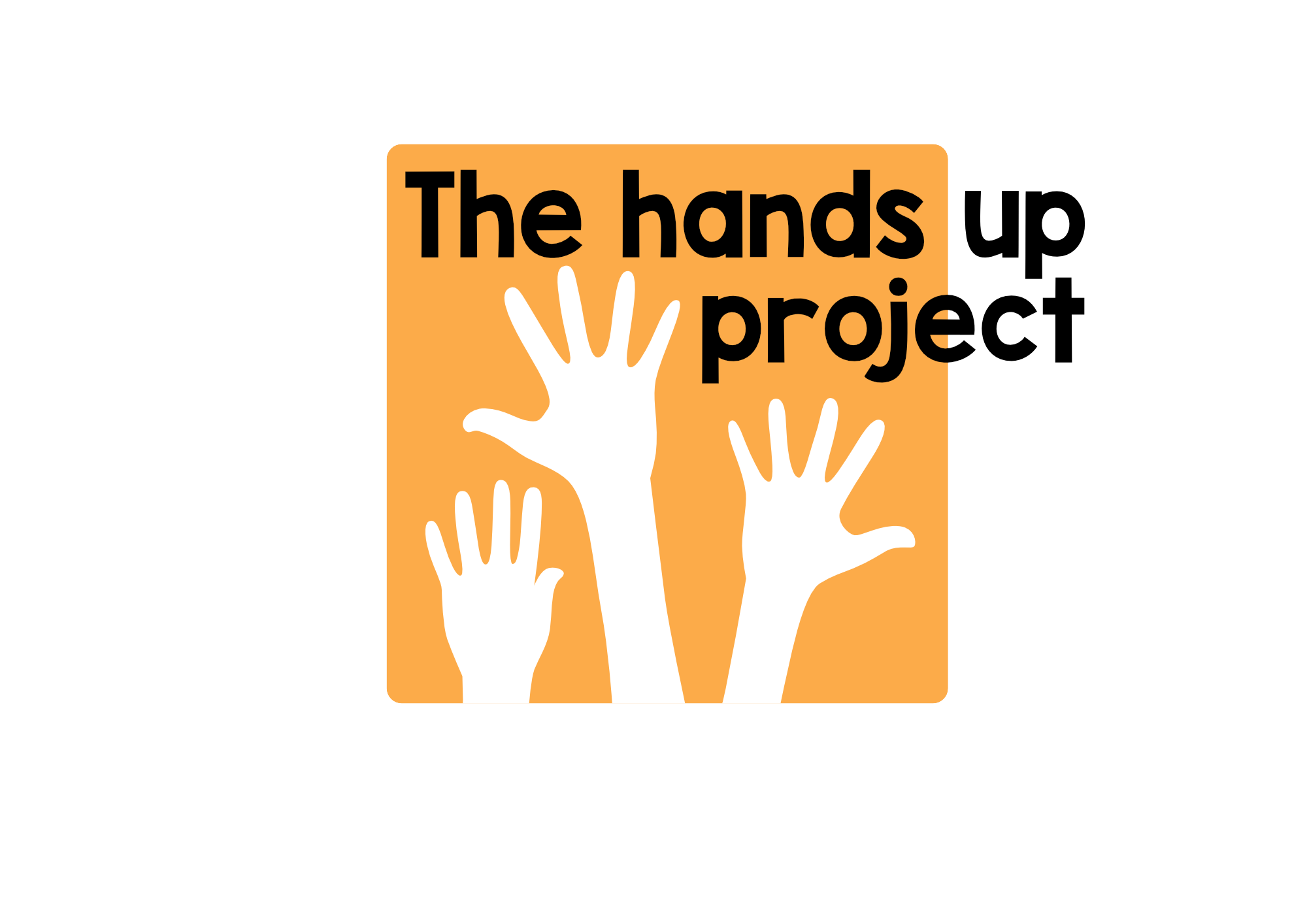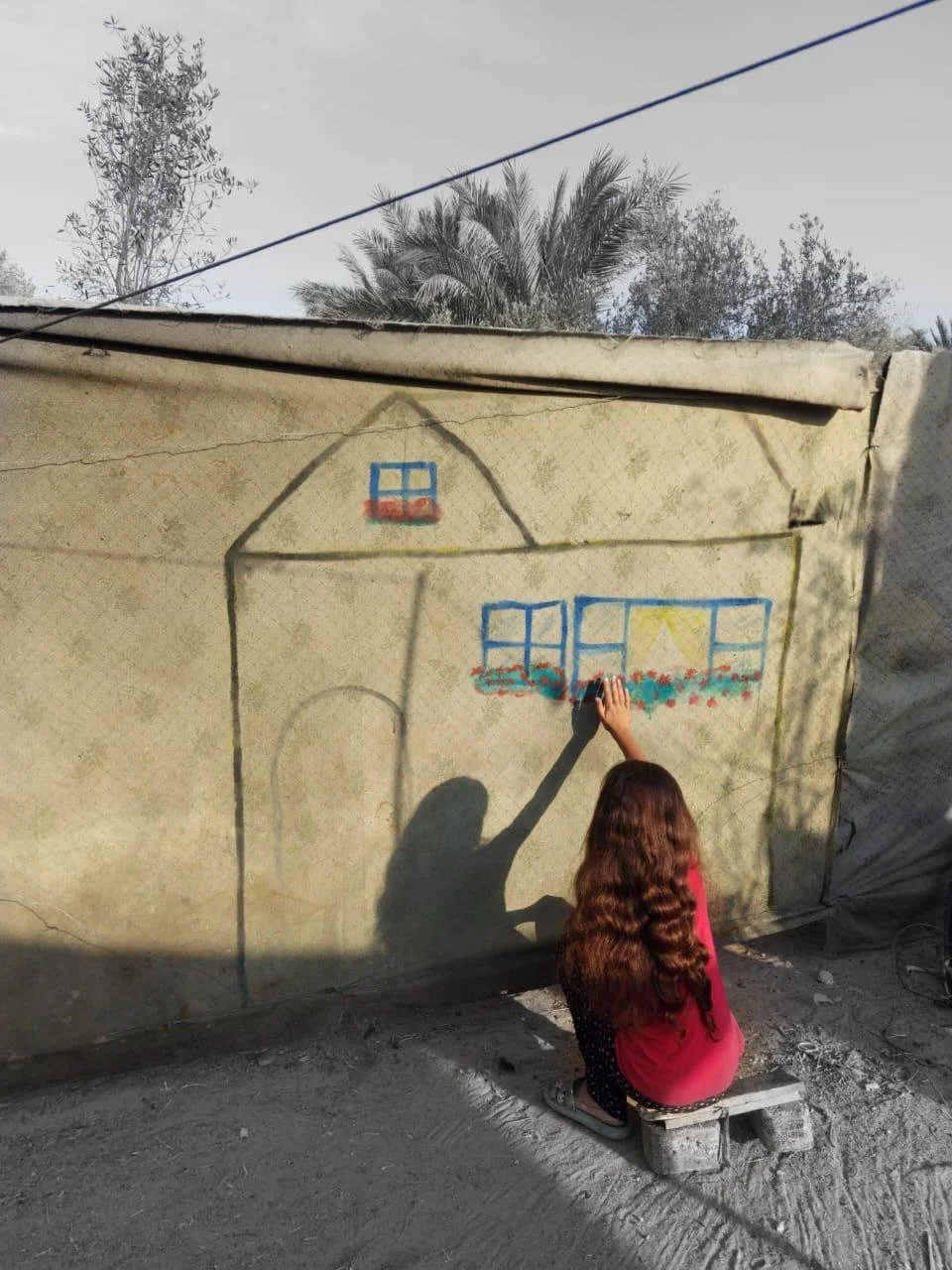Art from Rubble Project – Nada Rajab
How did I transform pain into art, and rubble into a message, within the Gaza Strip?
In the heart of a city that has turned grey after two years of genocide, I chose to create color from the rubble—to revive our emotions and our city. I began by launching a series of artistic, theatrical, literary, and other creative activities with our brilliant students as part of the project.
The first activity began when I asked one of my students to draw a wish during wartime. She drew her home, adorning its windows with flowers, and placed herself at the center of the painting. She said her wish was to sit peacefully in her house, instead of living in a tent that is unbearably hot in summer and freezing in winter.
Later, we carried out an activity titled “I Miss My Home.” The students drew things they longed for—things absent from life in the tents.
They drew a light bulb, symbolizing the electricity that has been cut off for two years.
Flowers, representing the loss of hope.
A phone, symbolizing the severed internet and the destruction of all communication towers by the occupation—leaving us without even the most basic means of connection.
We miss our homes, which were mercilessly destroyed, and the peace that once accompanied them.
We also wrote a literary piece about Palestine in English, paired with a background featuring the Arabic word “حرية” (freedom). I photographed olive branches hanging over the tent window. While reading books, we drew the map of Palestine. In a sorrowful scene, we painted our destroyed home. We then launched the Global Flotilla of Resilience activity, where children expressed their wishes for ships to reach Gaza’s shores and rescue them from this genocide.
In a touching scene, we held the activity inside the camp, near the children’s tent, alongside steadfast olive trees and the wood they had gathered to make fire. We crafted paper ships using old cassette tapes the children had salvaged from the rubble of a nearby home.
In the activity “Emotions Born from Art Amid the Rubble,” I used a piece of a wooden cabinet—a long drawer—as a canvas. Though it was meant for firewood, I turned it into a surface for painting.
The artwork depicted a sorrowful girl with blue eyes, accompanied by a stream of blood.
In “Our Emotions Through Eyes,” my artist students painted on wooden panels they had collected that morning. Upon gathering them, they immediately decided they were for art—not for burning. I provided a sample drawing to help clarify the concept behind the activity. As the project progresses, I aim to achieve a set of creative outcomes with my talented students—individually and in groups. Here are the key goals:
1. A portfolio titled “Art from Rubble Activities” for each student, consisting of 20–25 pages that document their artistic work, personal expression, and human experiences. Each portfolio includes a biography and a representation of the student’s identity.
2. Visual artworks including:
- Drawings on cardboard
- Collaborative murals on destroyed walls
- Sculptural compositions using materials collected from rubble
- Painting on stones and debris
- Artistic formations from rubble
- Stone carving
- Fabric painting
3. Literary activities such as:
- Writing short stories
- Composing poems and verses
4. Theatrical activities including:
- Writing and performing plays
5. Documented media:
- Filmed videos, short films, interviews
- Full documentation of activities with daily and weekly follow-ups
At the end of the project, selected artworks from each student and group will be showcased in a large-scale art exhibition open to all. I plan to invite journalists and photographers to document the closing event, which will be held as a unique and special evening. All coordinators, supervisors, and project staff will be present. Each student will represent their work—whether visual art, abstract, or theatrical—and a special speech will be delivered by the project coordinators both inside and outside Gaza.

